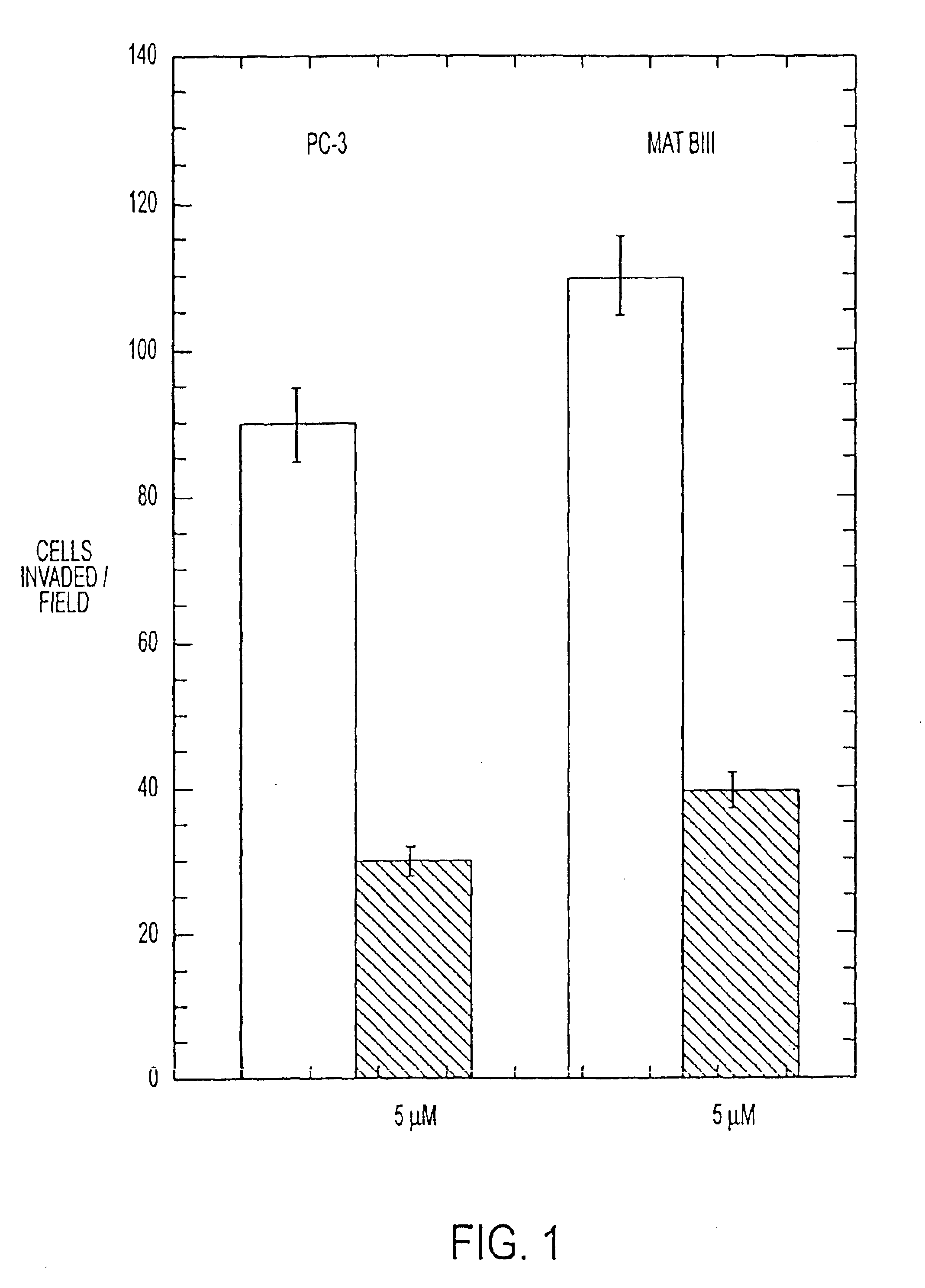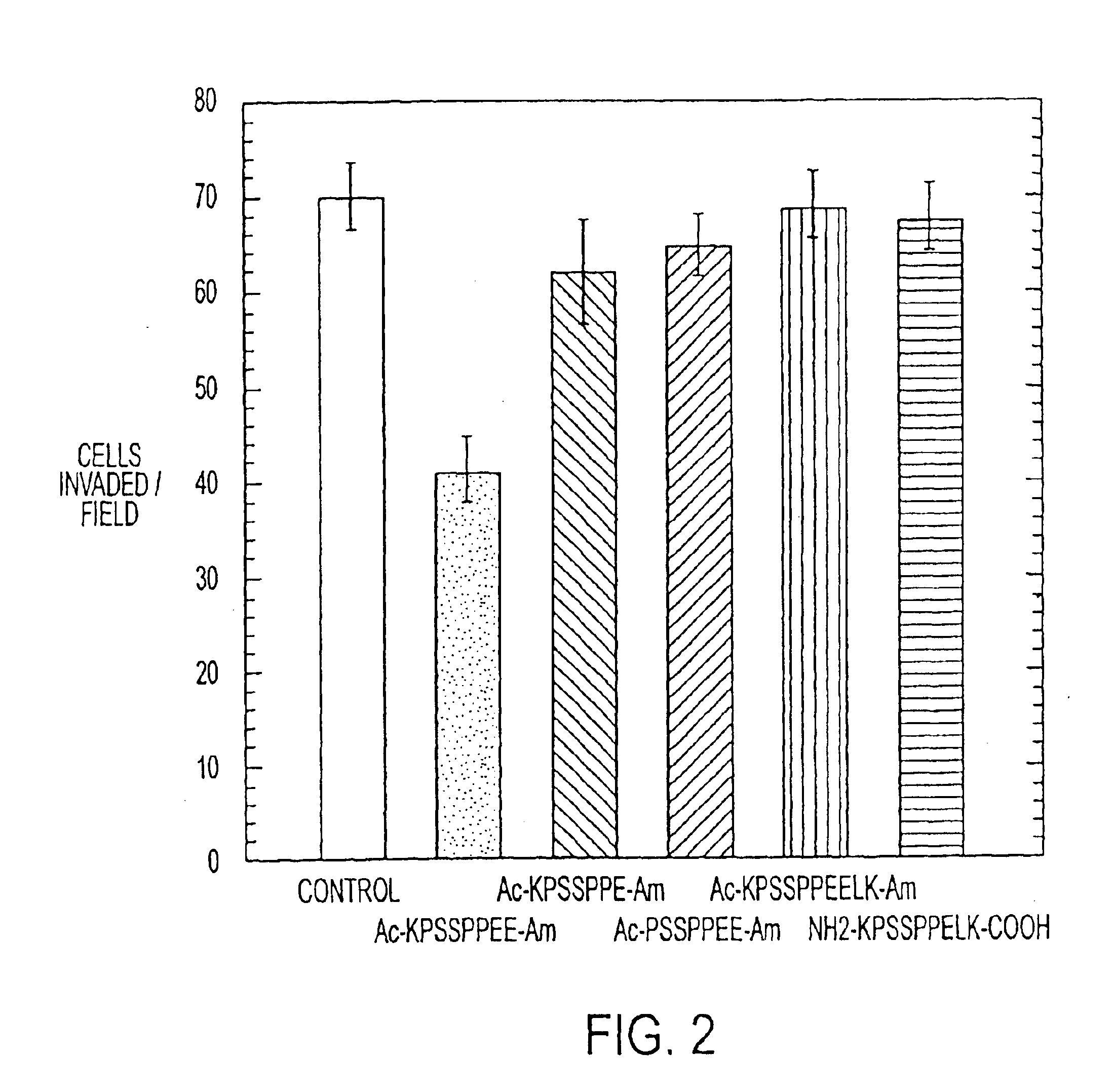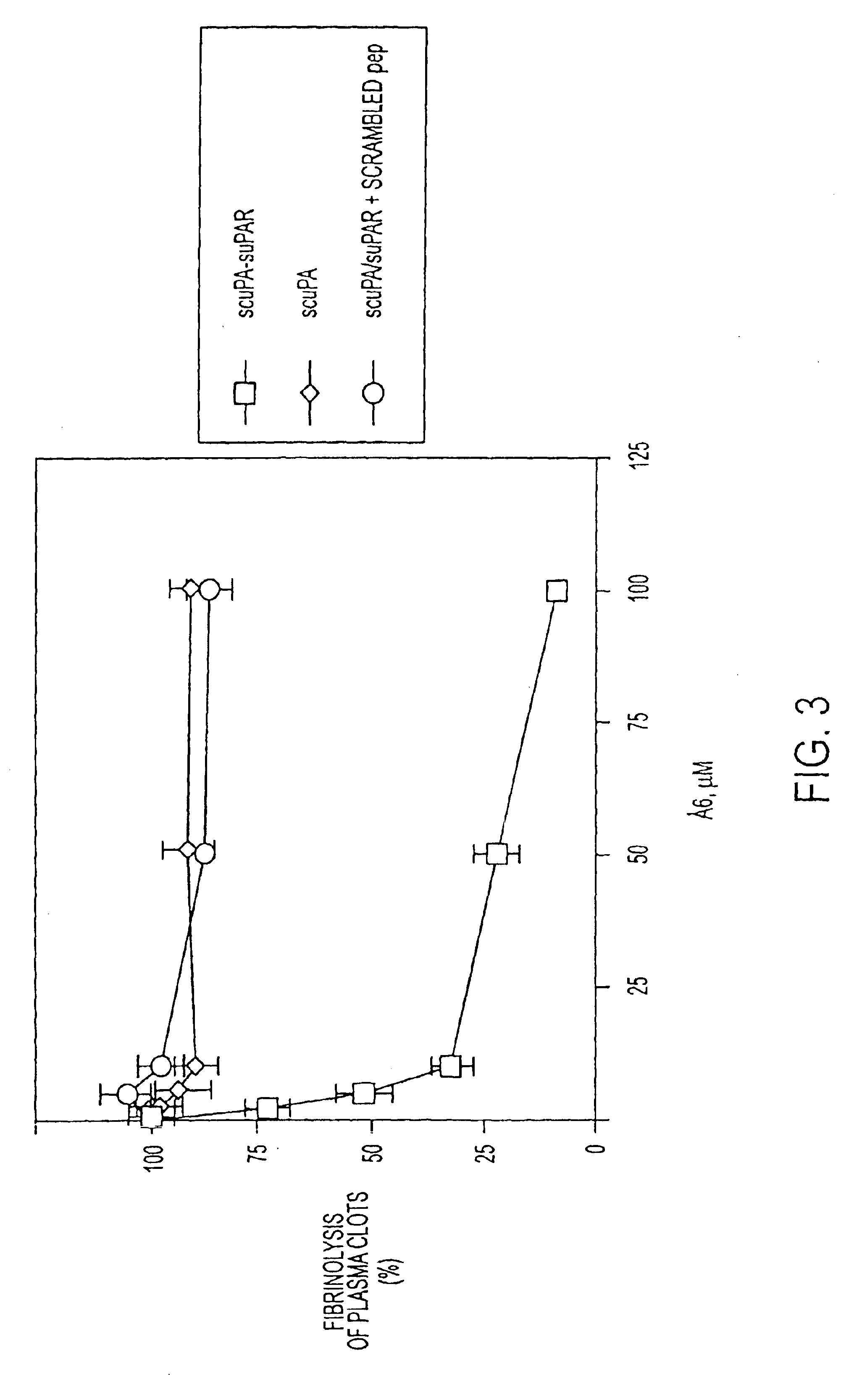Anti-invasive and anti-angiogenic compositions
a composition and anti-angiogenic technology, applied in the field of biochemistry, organic chemistry and medicine, can solve the problems of not being selective for rapidly dividing cell populations, ineffective anti-metabolites, and toxicities, and achieve the effects of suppressing tumor growth, preventing growth or expansion, and inhibiting invasion and/or angiogenesis
- Summary
- Abstract
- Description
- Claims
- Application Information
AI Technical Summary
Benefits of technology
Problems solved by technology
Method used
Image
Examples
example i
[0266]Synthesis of Acetyl-Lys-Pro-Ser-Ser-Pro-Glu-Glu-NH2
[0267]The starting material was p-methyl-benzhydrylamine resin substituted at a level of 0.70 mEq per gram of resin. Each of the L-amino acids, starting with glutamic acid, was added in sequence in a synthesis cycle consisting of the three steps of TFA deprotection, coupling and capping. The completed peptide was subjected to HF cleavage and then purified.
[0268]1. TFA De-Protection
[0269]The starting resin was conditioned before adding the first glutamic acid, or, in the case of subsequent cycles, the BOC protecting group was removed from the α-amino nitrogen of the starting material by treating the resin with 50% trifluoroacetic acid (TFA) in dichloromethane (DCM) (two to three volumes per resin volume). The mixture was stirred at room temperature for 30 minutes and then drained. The resin was then washed once with an equal volume of isopropanol for one minute and washed twice with an equal volume of methanol, each wash takin...
example ii
Anti-Invasive and Anti-Proliferative Activity of Capped KPSSPPEE (Å6) and Related Peptides
[0281]Several peptides were tested for anti-invasive capacity in a Matrigel® invasion assay system as indicated above (Kleinman et al., supra; Parish et al., supra). Several invasive human tumor lines (PC-3, MDA-MB-231) and non-human tumors (3LL, Mat B-III) were examined. The rat breast cancer line Mat B III and the human prostate cancer line PC-3 were initially used.
[0282]Tumor cells (5×105 / mL, in a volume of 200 μL) in serum-free RPMI 1640 medium were added to a disposable transwell invasion chamber coated with Matrigel® (Becton Dickinson, Lincoln Park, N.J.). The invasion chambers were placed in 24-well tissue culture plates filled with serum-free RPMI-1640 and the plates were placed in an atmosphere of 5% CO2 in humidified air at 37° C. for 48-72 hours. The chambers were then removed, inverted, and the cells which had invaded (and now appeared on the bottom face of the invasion chamber) wer...
example iii
Inhibition of Plasminogen Activation
[0290]Single chain uPA (scuPA) complexed with a soluble form (suPAR) of the uPA receptor (uPAR) is able to activate plasminogen as efficiently as uPA, in the absence of activation by plasmin (Higazi A. A. R. et al., (1995) J Biol Chem 270: 17375-17380). scuPA remains as a single chain molecule, yet complex formation with suPAR induces a conformational change in scuPA, such that an active site capable of activating plasminogen was formed. This scuPA-suPAR complex mimics the scuPA-uPAR complex formed on the cell surface and activation of plasminogen by scuPA bound to cell-surface uPAR has indeed been demonstrated (Manchanda N. et al., (1991) J Biol Chem. 266: 12752-12758). In addition, the scuPA-suPAR complex has been demonstrated to mediate clot lysis (fibrin turnover) in vitro and was more efficient in this assay than uPA alone. The scuPA-uPAR (or scuPA-suPAR) complex is very resistant to inhibition by endogenous uPA inhibitors (PAIs) (Higazi, A R...
PUM
| Property | Measurement | Unit |
|---|---|---|
| Volume | aaaaa | aaaaa |
| Volume | aaaaa | aaaaa |
| Volume | aaaaa | aaaaa |
Abstract
Description
Claims
Application Information
 Login to View More
Login to View More - R&D
- Intellectual Property
- Life Sciences
- Materials
- Tech Scout
- Unparalleled Data Quality
- Higher Quality Content
- 60% Fewer Hallucinations
Browse by: Latest US Patents, China's latest patents, Technical Efficacy Thesaurus, Application Domain, Technology Topic, Popular Technical Reports.
© 2025 PatSnap. All rights reserved.Legal|Privacy policy|Modern Slavery Act Transparency Statement|Sitemap|About US| Contact US: help@patsnap.com



